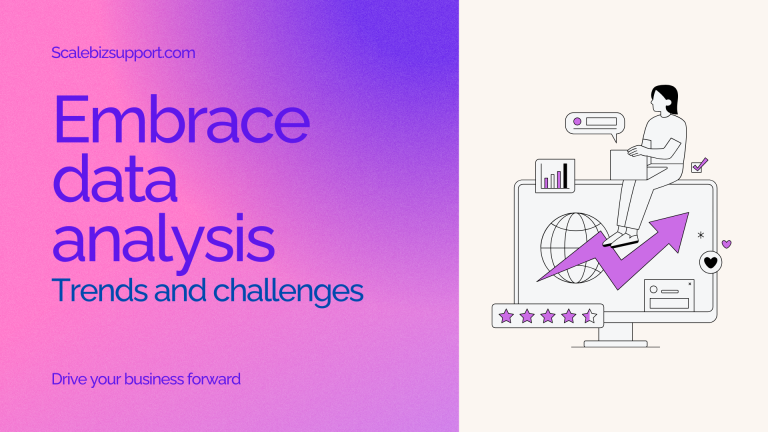In a world defined by digital transformation, embracing data analysis in the current trend has become more than just an advantage—it’s a necessity. Whether you’re a business owner, policymaker, healthcare provider, or student, data analytics enables you to uncover patterns, predict outcomes, and make evidence-based decisions in real time.
From global markets to local startups, data is the new currency, and those who know how to analyze it are reaping enormous rewards.
Understanding Data Analysis in the Current Trend
Data analysis refers to the systematic process of collecting, cleaning, interpreting, and visualizing data to extract useful insights. In the current trend, it plays a central role in driving innovation, improving processes, and delivering personalized experiences.
Thanks to advancements in artificial intelligence (AI), machine learning (ML), and cloud computing, data analysis is now faster, more scalable, and accessible across industries.
Key Reasons to Use Data Analysis Today
1. Informed Decision-Making
In a rapidly changing business environment, guesswork is no longer acceptable. Data analysis in the current trend allows individuals and organizations to:
- Predict customer behavior
- Identify market opportunities
- Improve financial forecasting
- Track performance in real time
With tools like Power BI, Google Analytics, and Tableau, decision-makers can visualize trends and pivot strategies instantly.
2. Enhancing Operational Efficiency
Organizations can use data analytics to:
- Identify bottlenecks
- Reduce waste
- Automate repetitive tasks
- Optimize supply chains
By pinpointing inefficiencies and areas for improvement, businesses can cut costs and deliver better services.
3. Staying Competitive in a Data-Driven Market
In today’s competitive landscape, companies that leverage data analysis in the current trend gain a strategic edge. This includes:
- Benchmarking against competitors
- Tracking industry trends
- Rapid product innovation
- Real-time customer feedback loops
Firms like Amazon, Netflix, and Uber built their empires on data-driven decision-making.
4. Supporting Predictive and Prescriptive Analytics
Modern data tools do more than just report past events—they forecast future outcomes and suggest optimal actions. For example:
- In retail, data predicts inventory needs during holidays.
- In healthcare, it identifies at-risk patients early.
- In finance, it detects fraudulent activity using behavior patterns.
These capabilities empower organizations to be proactive rather than reactive.
5. Facilitating Personalization and Customer Satisfaction
Whether you’re selling a product or delivering a service, customers expect personalized experiences. Data analysis allows businesses to:
- Segment customers by behavior and preferences
- Customize marketing messages
- Recommend relevant products or services
Brands that personalize content using data are seeing higher conversion rates and long-term customer loyalty.
Industries Leveraging Data Analysis in 2025
Nearly every industry is embracing data analysis in the current trend, including:
- Healthcare: For diagnosis, treatment plans, and outbreak tracking
- Education: To assess student performance and personalize learning
- Agriculture: Using sensors and satellite data to increase crop yields
- Finance: For credit scoring, portfolio management, and risk assessment
- Public Sector: Enabling smart city planning and policy formulation
Even sports teams now use data to improve player performance and game strategy.
Related: Where to Learn AI Skills: Top Platforms in 2025
Popular Tools for Data Analysis
Modern data analysis tools make it easy for both technical and non-technical users to access insights. These include:
- Microsoft Power BI
- Google Data Studio
- Python & R programming
- Excel with advanced analytics
- SQL for database querying
- Tableau for interactive dashboards
These tools support data visualization, automated reporting, and real-time monitoring.
Challenges to Be Aware Of
While the benefits are immense, data analysis also comes with challenges:
- Data privacy and compliance (GDPR, HIPAA)
- Skill gaps in data literacy
- Data quality and integrity issues
- High initial costs for advanced analytics tools
To overcome these, organizations must train staff, invest in secure infrastructure, and set clear data governance policies.
Future of Data Analysis: What Lies Ahead
As technology evolves, the scope of data analysis in the current trend will expand further:
- AI-driven automation will make insights faster and more accurate
- Edge computing will allow real-time analytics at the device level
- Natural language processing (NLP) will simplify querying and interpretation
- Data democratization will enable everyone in an organization to act on insights
Businesses that adapt early will lead the pack in innovation, responsiveness, and growth.
In 2025 and beyond, adopting data analysis in the current trend is no longer optional—it’s essential. From guiding decisions to optimizing operations and predicting the future, data empowers individuals and organizations to thrive in a digital-first world.
Whether you’re a small business owner, data scientist, policymaker, or student, now is the time to invest in data literacy and analytics tools. The better you understand your data, the more powerful your impact will be.

